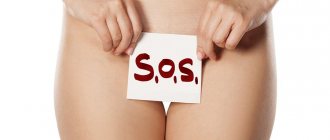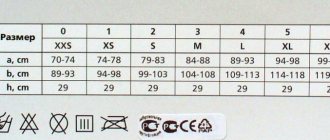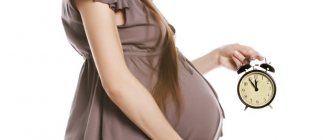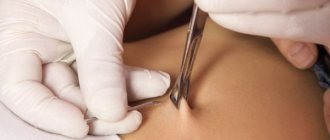After the mother and baby are discharged from the maternity hospital, grandparents, as well as numerous relatives and friends rush to congratulate the young parents on the new addition to the family and look at the newborn. All the attention and gifts are only for him! And the new mother must meet, treat, entertain and see off guests, fuss around the house, not forgetting to feed the child. And I really want to recover after childbirth, relax and just be alone with my husband and baby. But how did the postpartum period traditionally go in the old days?
Pregnancy up to sixteen and older
If we talk only about physiology, it may seem that if the possibility of conceiving a child has arisen, it means that purely physiologically the body is ready for both pregnancy and childbirth. But in practice this is not always the case. Of course, the body is young, active and there are no difficulties that arise in older mothers, but pregnancy also has its own nuances, both due to anatomy and physiology, immaturity of the body, and due to behavioral and psychological characteristics. It cannot be said that such a pregnancy will be easy and cloudless, if only because it is rarely desired at the age of 13-15 or a little older. Therefore, adolescents experience severe stress, which negatively affects the gestation process. In addition, they can hide their pregnancy from others for a long time, not registering on time and not receiving the necessary amount of treatment and examinations, which can lead to serious complications.
The uterus does not contract: what is the reason?
Among the most common factors influencing the slowdown of uterine contractions after the birth of a child, gynecologists identify:
- the number of fetuses a woman bears;
- location of the placenta;
- difficulties encountered during pregnancy or childbirth;
- heavy weight of the child;
- woman's health status, etc.
So, for example, uterine contractions occur more slowly in women whose pregnancy was:
- multiple or complicated (hypertension, nephropathy, etc.);
- if there was low attachment of the placenta;
- the fruit was quite large in size;
- the mother's body was severely exhausted;
- labor activity was weak;
- After giving birth, the woman behaved very passively and practically did not move.
not contract at all after childbirth if:
- its inflection;
- injuries of the birth canal;
- her underdevelopment;
- inflammatory processes in the appendages and the uterus itself (including in the past);
- fibroma (benign tumor);
- polyhydramnios during pregnancy;
- bleeding disorders, etc.
Pregnant woman's exchange card: when is it issued and what is it?
And this article is about home birth.
Childbirth in a young woman
Doctors say that there is a dependence on the age of the teenager at which pregnancy occurs, and difficulties in the further course of childbirth. The explanations for this are quite simple - such a pregnancy is practically never planned, desired, and the young mother does not prepare for childbirth, rarely attending courses, including with the future father of the child. Namely, the courses provide information about how childbirth proceeds, what needs to be done and how to breathe, how to adjust psychologically, prepare the perineum and interact with doctors. When admitted to the maternity hospital with contractions, such mothers panic, rush around, creating problems for doctors and themselves.
Adolescents are generally characterized by lability of emotions and psyche, they sharply perceive pain, anxiety and stress; the perception and sensation of pain among girls is higher than among older women in labor, and therefore, childbirth and pain are a difficult ordeal for them. Among other things, if a child is not wanted, it is more difficult to endure all emotional and physical experiences. Often they are also deprived of the support of friends, the baby’s father and even their parents, which forces them to be left alone with pain and experiences, on which the course of the birth itself and its outcome depend.
If the uterus contracts slowly
Immediately after the birth of the baby, a cold heating pad is applied to the new mother’s belly, this helps stop bleeding and speed up uterine contractions.
Over the course of several days that the woman in labor will be in the maternity hospital, doctors will constantly check the condition of the uterus and the level of its contraction.
determine the low ability of the uterus to contract during a routine examination based on the condition of the fundus of the uterus (in this case it will be soft). Moreover, a woman should not be discharged from the maternity hospital until the doctor is sure that the uterus is contracting at a normal pace.
If the gynecologist sees that the uterus cannot contract on its own , he prescribes the woman special drugs that enhance her contractile activity ( prostaglandins or oxytocin ), as well as, if necessary, external massage of the fundus of the uterus, which is carried out through the anterior abdominal wall.
The main impetus for accelerating uterine contractions is breastfeeding, so we advise you to start breastfeeding your baby as soon as possible.
It is also recommended to move a lot (if possible) and lie on your stomach more often, or even better, sleep on it. The rules of personal hygiene should not be neglected, namely regularly washing, treating wounds, etc.
Regular emptying of the bladder has a significant impact on the level of uterine contraction . Women often do not pay due attention to this fact, especially since after giving birth they had internal stitches, because then urination brings a lot of painful sensations. However, despite the pain, you should try to go to the toilet as often as possible.
As a rule , after childbirth, the uterus actively contracts even in those women who did not avoid slight physical activity during pregnancy. Therefore, we advise you to walk in the fresh air as often as possible during pregnancy, do simple housework and do simple exercises.
If all of the above methods do not have the desired effect and the uterus still does not contract, cleaning may be the solution. The fact is that lochia (postpartum discharge) or part of the placenta may remain in the uterine cavity, or the uterine os may be clogged with blood clots formed.
Without cleansing, all this will inevitably lead you to the development of an inflammatory process, perhaps not only in the uterus itself, but also outside it. If this does not help, unfortunately, the consequences for the woman become even more serious: she will have to undergo surgery or, in the worst case, even remove the uterus.
But, fortunately, healthy women who follow all the recommendations of doctors, as a rule, do not have serious problems with uterine contractions after childbirth. So take care of yourself and be healthy!
The plug comes out, when to give birth? Find the answer to this question here.
And this article is about training contractions during pregnancy.
This section contains a lot of useful information about planning a pregnancy.
Childbirth in teenagers: why is it difficult?
If we talk about physiology and obstetric nuances, adolescents are still immature; such women in labor have a difficult time experiencing childbirth due to the immaturity of the birth canal and the incomplete formation of the genital organs themselves. Therefore, there is likely to be a violation of the contractile activity of the uterus and the coordination of contractions and pushing. As a result, adolescents often experience such anomalies as rapid or faster labor, or, on the contrary, prolonged labor, with incoordination and weakness of labor. The tissues of the birth canal themselves in such women are not ready for the birth of a baby, which often leads to ruptures and injuries in the perineum, uterus or vagina. Doctors, knowing about such characteristics of adolescents during childbirth, often practice episeotomy to reduce trauma to the child and the youngest mother.
Childbirth lasts on average up to 14 hours; due to physical fatigue and nervous tension, severe fatigue often sets in, which is why the mother risks complications such as postpartum hemorrhage. Therefore, adolescents are often hospitalized in advance in order to fully prepare for the upcoming birth. Childbirth usually occurs naturally, and pain relief is often used.
At the end of pregnancy
At this stage, when contractions begin before childbirth, it is necessary to determine when to go to the maternity hospital.
- By the tenth day, the blood in the discharge usually stops. The discharge is similar to that in early pregnancy. The most natural, ordinary discharge now leaves the vagina. All this is typical for the normal course of the postpartum period. Deviations from such processes, especially in the form of delayed discharge, very strong discharge, and also its unusual appearance, should immediately alert the woman: in this case, it is necessary to urgently consult a doctor.
- During childbirth, abrasions or tears, most often insignificant, may form on the cervix, vagina and perineal area. They will heal within a couple of days. If there are tears in the perineum, they must be sewn up. Unsewn ruptures can cause prolapse or prolapse of the genital organs in the future.
- During childbirth, the vagina, the ligaments that support the uterus, and the pelvic muscles are greatly stretched. In the initial days after childbirth, they contract poorly and therefore the pelvic organs can descend when straining. The elasticity of the ligaments and muscles of these organs will slowly recover. Slowly and gradually the vagina will become narrower. It is for this reason that women in labor in the first days after childbirth should observe bed rest and also avoid significant physical activity. In a woman who has given birth, the genitals will not return entirely to the state that was observed before pregnancy.
At the end of pregnancy, the abdominal wall stretches greatly. During this, stretching of the rectus abdominis muscles occurs, which increases even more during childbirth. At the end of labor, the entire abdominal wall is overly stretched and relaxed. This circumstance, as well as the lack of habit of relieving minor need while lying down in the initial days after childbirth, can often lead to difficulty urinating.
- Relaxing the abdominal wall and constantly staying in bed will not help with the process of bowel movement. All this contributes to the fact that stool in the very first days of the postpartum period is often delayed, especially if the woman had a tendency to constipation before. The first bowel movement may often only be possible with the use of an enema or laxative.
Postpartum period of a young mother
A young mother usually has a difficult time with the postpartum period; there is a high risk of complications, inflammatory processes and bleeding, as well as mental breakdowns. On average, a child’s weight does not exceed 3000 g; low birth weight is common due to hypoxia and intrauterine growth retardation. This is due to behavioral characteristics, the presence of bad habits, poor nutrition and external circumstances that negatively affect the development of the fetus.
Often, a young mother in the maternity hospital is faced with a choice - whether to keep the child or abandon him, often under pressure from her relatives and the baby’s father. Many mothers refuse breastfeeding and do not fully care for the baby, which prevents them from forming deep emotional connections with the child and encourages them to abandon him.
The percentage of young mothers abandoning their children in the maternity hospital, even if the child was born completely healthy, is higher than in other categories. They prefer to forget about the fact of pregnancy and childbirth, although many years later they greatly regret their actions.
How does the uterus contract?
After childbirth, the inside of the uterus is a huge wound, and it is most damaged in the area where the placenta was attached, which is where a large number of thrombosed vessels are located. In addition, on the inner surface of the uterus there are remnants of the fetal membrane and blood clots.
Normally, the uterine cavity should clear out within the first 3 days. In this process, a significant role is played by phagocytosis (phagocytes are leukocytes that are capable of dissolving bacteria) and extracellular proteolysis (dissolution of bacteria using proteolytic enzymes).
Thanks to these processes, wound secretion (lochia) is released from the uterus. In the first days, lochia appears as bloody discharge, on the 3-4th day it becomes serous-sucrose with a high content of leukocytes, by the end of the third week, the uterine discharge should be liquid and light and disappear completely by the sixth week.
Moreover, if we talk about the restoration of the epithelium of the uterine cavity (inner lining), then it occurs after about 3 weeks, while the placenta is restored closer to the end of the postpartum period.
Here you will find out what indications for caesarean section exist: vision, etc.
And this article talks about the entwining of the umbilical cord around the neck.
The child stays with his mother
If the child remains with the mother, she is discharged from the maternity hospital; many teenagers refuse to raise him on their own, shift responsibilities to parents or nannies, and do not pay due attention to the child. They themselves continue their studies or their usual life, forgetting about the responsibility for the life of the person they have produced. Often a child born to a young mother is weak, he requires a special approach and attention, is often or for a long time ill, may suffer from anemia, has signs of rickets or problems with development, both mental and physical. This is often due to the fact that the young mother, due to inexperience or unwillingness to bother with him, pays little attention to his condition. She has no child care skills or knowledge about proper nutrition and development.
But it is worth noting that a young mother does not mean a bad one. Many women, having given birth to children at a very young age, become excellent mothers, giving the child all the necessary amount of attention, affection and love. The instinct of motherhood can awaken at any age, it depends on many factors. Undoubtedly, such mothers need help and support, especially if the child’s father does not help in raising them morally and financially.
Causes of uterine subinvolution
The reasons for delayed uterine contractions may be hormonal disorders, anatomical defects, and infectious agents.
Hormonal disorders
Lack of prolactin , the hormone responsible for milk production. Even in postpartum women who are not breastfeeding, the initial levels of prolactin, the main parental hormone, remain at a fairly high level in the first days of the postpartum period.
The production of prolactin entails an immediate release of oxytocin , a hormone that contracts the muscles of the uterus. Prolactin is produced reflexively when the nipples are irritated. Therefore, in nursing mothers, uterine contractions occur much faster.
Lack of prolactin leads to a decrease in uterine contractility. Central regulation of the cerebral cortex is of great importance. When a child is desired, prolactin production is significantly higher.
Anatomical reasons
Remnants of the placenta attached to the wall of the uterus prevent its contraction . Just as a person cannot move his arm in a cast, the uterus cannot contract completely, constrained by the attached lobule of the placenta.
Blockage of the external os of the cervix, flexion of the uterus and other wisdom relate more to theory. With normal contractility, these factors have no significance. A person exhales air with equal success, regardless of whether he has his own jaw or a false one. Likewise, the contents of the uterus freely leave its cavity when the muscles contract.
Restoration of the spine and various muscles after childbirth
Many women during pregnancy and immediately after childbirth complain of pain in the lower back, as well as in the cervical spine and shoulder girdle. Pain in the lower back is associated with an increase in the load on the abdominal wall during pregnancy, due to this the muscles of the lower back become thinner, and a young mother often lifts her baby in her arms, this is also an additional load on both the lower back and the shoulder girdle. As a result, discomfort appears in almost all parts of the spine.
To restore the spine, you need to do special exercises:
- Sit up straight with your arms crossed over your chest. Perform 10 body turns to the right and left.
- In a sitting position, clasp your hands behind your neck. Perform 10 body turns to the right and left.
- In a sitting position, the arms are extended in front of you and connected. Without releasing your arms, raise them above your head to the maximum allowable height. Hold for 10 seconds.
It is also necessary to strengthen your posture. The condition of the rhomboid muscle, which is attached from the spine on the right and left to the inner corners of the scapula, plays a role in correct and beautiful posture. The condition of the lumbosacral region is also very important, to strengthen which you need special exercises “Tense Nerve”:
- Take the starting position - lying on your stomach. Extend your arms forward. Pull yourself into a string. Slowly lift your upper body off the floor. Avoid sudden movements as much as you can. Make sure your arms are raised above your head. Then do the same with the lower body. And finally: raise both your arms and legs at the same time. Repeat each exercise 10 times.
In addition, massage is useful for restoring the muscles of the back and neck after childbirth; you can use a massage pad for this. Massage can be done only 2-3 weeks after birth. Massage increases muscle performance, this allows you to restore their tone after childbirth.
Exercises for the abdominal wall, the so-called “Cat Breathing”:
- While in a position on all fours, arch your back upward and perform diaphragmatic breathing in this position (2 cycles). Next, the lower back bends down, but you need to make sure that there is no protrusion of the abdomen. Maintain position 2 breathing cycles. Do it at least 10 times.
To strengthen the muscles of the perineum, it is necessary to use Kegel exercises: squeeze and relax the muscles of the perineum, which will allow them to recover and avoid complications such as urinary incontinence and prolapse of the pelvic organs.








